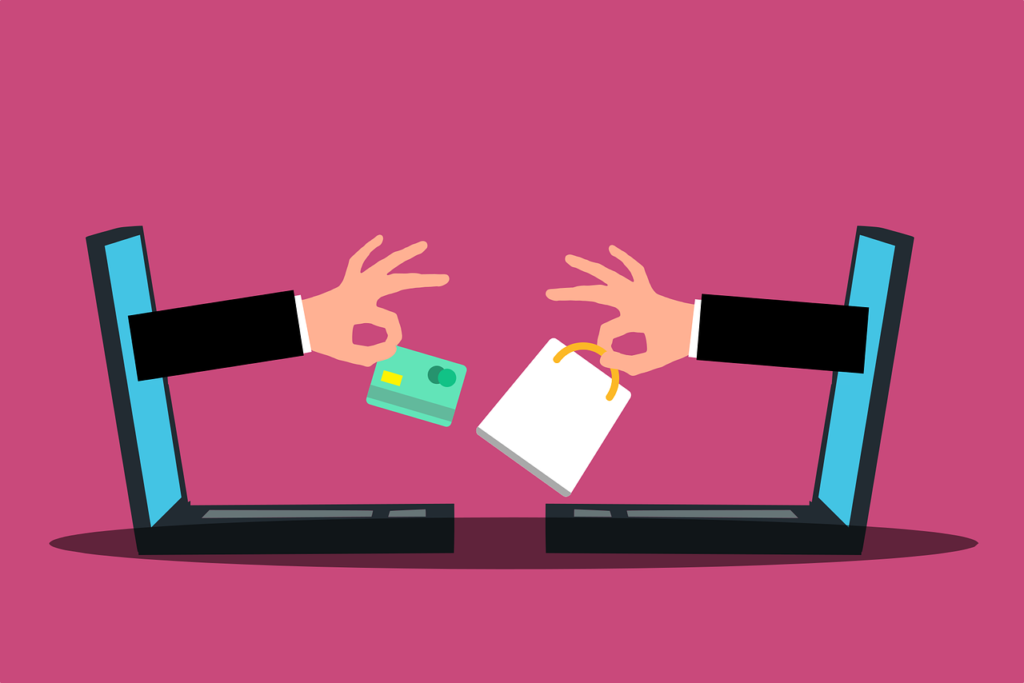In a world flooded with advertisements, standing out is no longer about outspending competitors but about creating meaningful connections. Building brand awareness doesn’t have to be expensive, and it certainly doesn’t mean cutting corners on quality. The secret lies in being smart, strategic, and deeply in tune with your audience.
A cost-effective brand awareness strategy is about delivering maximum impact with limited resources. It’s about creativity over cash, authenticity over flashy campaigns, and making every dollar count. This guide walks you through actionable ways to create an effective brand awareness strategy that resonates with your audience and stays well within budget.
Step 1: Start with a Clear Understanding of Your Brand and Audience
Define Your Brand’s Core Identity
Before you start building awareness, you need to know exactly what you want people to associate with your brand. What makes you unique? What problem do you solve for your customers? Your brand’s identity—its voice, values, and personality—should be crystal clear.
For example, if you’re a sustainable clothing brand, your messaging should consistently reflect eco-friendly practices, quality craftsmanship, and timeless style. Having a well-defined identity ensures that your efforts build a cohesive image in the minds of your audience.
Consistency is key. From your logo to your messaging to your social media posts, every element should reinforce your brand’s core identity.
Understand Your Target Audience
Not all audiences are created equal, and trying to appeal to everyone is a surefire way to dilute your efforts. Focus on the people who are most likely to connect with your brand. Dive into their demographics, preferences, challenges, and behaviors.
For example, if your product targets young professionals, understand their aspirations, daily struggles, and how your brand fits into their lives. Knowing your audience inside-out ensures your efforts resonate, saving you from wasting resources on campaigns that miss the mark.
Tools like Google Analytics, social media insights, and customer surveys can help you uncover valuable data about your audience. Use this information to refine your messaging and focus your strategy on what matters most to them.
Step 2: Leverage Content Marketing for Organic Reach
Create High-Value Content
Content marketing is one of the most cost-effective ways to build brand awareness. By creating valuable, shareable content, you can attract your target audience without spending heavily on ads. Focus on content that educates, entertains, or inspires.
For example, a skincare brand could produce blog articles on “The Best Morning Routines for Glowing Skin” or videos explaining the science behind their products. When your content provides real value, people are more likely to share it, expanding your reach organically.
The key is consistency. Publish regularly and ensure your content aligns with your brand’s values and the interests of your audience.
Optimize for SEO
Great content is only valuable if people can find it. That’s where search engine optimization (SEO) comes in. By targeting the right keywords, you can rank higher in search results and attract more visitors to your site—without paying for clicks.
For instance, a fitness app might target keywords like “best home workout routines” or “how to lose weight with minimal equipment.” By providing comprehensive, SEO-optimized content on these topics, they can capture organic traffic from users searching for solutions.
SEO is a long-term investment, but when done right, it can drive significant awareness without the need for constant ad spend.
Step 3: Harness the Power of Social Media

Choose the Right Platforms
You don’t need to be everywhere; you just need to be where your audience is. If your target audience is professionals, LinkedIn might be your best bet. If they’re Gen Z, focus on TikTok or Instagram. Align your efforts with the platforms where your audience is most active.
For example, a home decor brand might thrive on Pinterest, where users are looking for inspiration and ideas. By sharing visually appealing pins, they can build awareness among an audience actively seeking what they offer.
Being strategic about platform selection saves time and resources while ensuring your message reaches the right people.
Engage Consistently
Social media isn’t just a broadcasting tool; it’s a conversation starter. Reply to comments, participate in discussions, and engage with your audience authentically. When people feel heard and valued, they’re more likely to remember your brand.
For example, a coffee shop might host Q&A sessions on Instagram Stories or respond to every comment on their posts with a personalized message. These small interactions create a sense of community and build brand loyalty.
The best part? Social media engagement costs nothing but your time.
Step 4: Tap into Influencer and Community Marketing
Collaborate with Micro-Influencers
Influencer marketing doesn’t have to involve paying celebrities. Micro-influencers—those with smaller but highly engaged followings—are often more cost-effective and authentic. Their audiences trust them, making their recommendations more impactful.
For example, a local bakery could partner with a food blogger who has a few thousand followers in their city. A single post featuring the bakery’s signature dessert could drive significant awareness among a highly targeted audience.
Focus on influencers whose values align with your brand. Authenticity matters more than follower count.
Engage with Communities
Building relationships with online communities is another way to boost awareness. Participate in forums, Facebook groups, or Reddit threads where your target audience hangs out. Share insights, answer questions, and provide value without overtly promoting your brand.
For example, a tech startup could join a LinkedIn group for IT professionals and share tips on solving common tech challenges. By positioning themselves as helpful and knowledgeable, they create positive associations with their brand.
Community engagement builds trust and credibility, often at little to no cost.
Step 5: Use Paid Media Strategically
Start Small with Paid Ads
Paid advertising can amplify your brand awareness efforts, but it’s important to spend wisely. Start with small budgets and test different campaigns to see what resonates with your audience. Platforms like Facebook, Google, and TikTok allow you to set precise targeting options, ensuring your ads reach the right people.
For instance, an online learning platform might run a Facebook ad targeting young professionals interested in career development. By testing different headlines, visuals, and CTAs, they can identify the most effective combinations without overspending.
Once you find a winning formula, scale up gradually to maximize ROI.
Retarget Interested Prospects
Retargeting is a cost-effective way to stay on the radar of people who’ve already interacted with your brand. For example, if someone visits your website but doesn’t take action, retarget them with an ad showcasing what they viewed, like “Still thinking about our eco-friendly water bottles?”
Retargeting ensures you’re spending money on people who are already familiar with your brand, increasing the likelihood of conversion.
Step 6: Measure, Learn, and Adapt

Track the Right Metrics
To ensure your efforts are effective, track metrics that align with your goals. For brand awareness, focus on metrics like website traffic, social media reach, and engagement rates. Tools like Google Analytics, social media insights, and marketing dashboards can help you monitor performance.
For example, if you’re running an Instagram campaign, measure how many people saw your posts, how many engaged with them, and how your follower count changed.
Tracking these metrics allows you to identify what’s working and refine your strategy.
Be Ready to Pivot
Not every tactic will work, and that’s okay. The key is to learn from your data and adjust your approach as needed. If a particular campaign isn’t delivering results, analyze why and try something different.
For instance, if your blog content isn’t driving traffic, revisit your keyword strategy or experiment with different topics. If a social media post underperforms, test a new format, such as a video or infographic.
Continuous improvement ensures your brand awareness strategy remains effective and efficient over time.
Step 7: Create Memorable Experiences to Strengthen Awareness
Host Low-Cost Virtual or In-Person Events
Events, whether virtual or in-person, can be a powerful way to connect with your audience and leave a lasting impression. These experiences don’t have to be extravagant to make an impact. Focus on creating something engaging and aligned with your brand’s identity.
For example, a fitness brand could host free online workout sessions, inviting participants to try their products during the class. A small business could organize a local pop-up event to showcase their offerings while building relationships with the community.
Virtual events, like webinars, panel discussions, or live Q&A sessions, are cost-effective and allow you to reach a broader audience. They also position your brand as an authority in your field.
Encourage User-Generated Content
User-generated content (UGC) is an organic and cost-effective way to build brand awareness. Encourage your audience to share their experiences with your brand, whether it’s through social media posts, reviews, or testimonials.
For instance, a travel company could run a campaign asking customers to share photos of their trips with a branded hashtag. Featuring these posts on your channels not only boosts engagement but also builds trust by showcasing real customer experiences.
UGC campaigns turn your audience into brand ambassadors, amplifying your reach without heavy spending.

Related: Check out our free tools:

Step 8: Collaborate with Like-Minded Brands
Cross-Promote with Non-Competing Businesses
Collaboration with complementary brands can extend your reach and introduce you to new audiences without significant costs. Look for businesses that share your values and target audience but offer different products or services.
For example, a coffee shop could partner with a local bakery to offer a joint promotion, such as “Buy a latte and get a free pastry.” Each brand promotes the campaign to their own audience, doubling exposure for both.
Cross-promotions allow you to leverage each other’s strengths, creating a win-win situation that enhances brand awareness.
Explore Co-Branded Content
Co-branded content is another effective collaboration tactic. Work with a partner brand to create valuable content, such as a guide, webinar, or video series, that benefits both audiences.
For instance, a fitness equipment brand and a nutrition app could team up to produce a guide on “Home Workouts and Healthy Meal Plans.” By sharing the content across their channels, both brands can reach new prospects while adding value to their existing followers.
Collaborations like these demonstrate thought leadership and build credibility, all while expanding your reach.
Step 9: Build Long-Term Awareness with Consistent Engagement
Invest in Thought Leadership
Becoming a trusted voice in your industry can significantly boost brand awareness over time. Share insights, opinions, and expertise through blogs, podcasts, or guest contributions to reputable publications.
For example, a startup founder could write articles on LinkedIn about industry trends or share personal stories on how they built their brand. Consistently providing valuable insights establishes you as a go-to resource, ensuring your brand stays top-of-mind.
Thought leadership isn’t about self-promotion; it’s about adding value and sparking conversations that enhance your brand’s reputation.
Use Email Marketing to Stay Connected
Email marketing remains one of the most cost-effective ways to nurture relationships and build brand awareness. Send regular newsletters filled with helpful tips, company updates, or exclusive offers to keep your audience engaged.
For example, a bookstore could send out a weekly email featuring staff book picks, upcoming author events, or sneak peeks at new arrivals. Over time, these consistent touchpoints reinforce your brand’s presence in your subscribers’ lives.
Email campaigns are low-cost, high-impact tools that let you maintain a direct line to your audience, ensuring they don’t forget you.
Step 10: Celebrate Small Wins and Amplify Successes

Share Milestones and Testimonials
Every win, no matter how small, is an opportunity to build awareness and credibility. Celebrate milestones like reaching a certain number of customers, launching a new product, or receiving an award. Sharing these moments humanizes your brand and builds trust.
For instance, a local business might share a social media post about their one-year anniversary, thanking customers for their support. Adding a testimonial or positive review to the post amplifies its impact.
These celebrations show your audience that your brand is growing, thriving, and valued by others.
Showcase Customer Success Stories
Highlighting how your customers have benefited from your offerings is a powerful way to build awareness and trust. Share detailed case studies, video testimonials, or user stories that showcase real-world results.
For example, a productivity app could feature a case study on how a small business increased efficiency by 30% using their tools. These stories not only demonstrate value but also make your brand relatable.
Sharing successes creates a positive feedback loop, encouraging more people to engage with and trust your brand.
Step 11: Monitor, Analyze, and Iterate
Track the Effectiveness of Your Campaigns
To know if your brand awareness strategy is working, you need to measure its performance. Track key metrics such as website traffic, social media reach, engagement rates, and brand mentions. Use tools like Google Analytics, Facebook Insights, and SEMrush to gather valuable data.
For example, if you’ve launched a campaign on Instagram, measure how many people saw your posts, how many interacted with them, and whether your follower count increased. Similarly, if you’ve written guest articles, track referral traffic from those publications.
Analyzing these metrics helps you understand what’s working and where adjustments are needed. It also ensures that your strategy remains aligned with your goals.
Learn from Your Audience’s Behavior
Your audience’s behavior provides invaluable insights for refining your strategy. Pay attention to how they interact with your content, which channels they prefer, and what messages resonate most.
For instance, if your audience engages more with video content than blog posts, consider shifting your efforts toward producing more video. Similarly, if a particular social platform drives most of your traffic, focus your resources there.
By staying responsive to your audience’s preferences, you ensure your strategy stays relevant and effective.
Step 12: Focus on Building Community
Cultivate an Engaged Online Community
Building brand awareness isn’t just about broadcasting your message; it’s about creating a two-way relationship with your audience. Foster a sense of community by encouraging interaction and participation.
For example, a fitness brand could create a Facebook group where users share workout tips, progress, and challenges. By moderating the group and engaging with members, the brand becomes an integral part of the community.
Engaged communities amplify your message organically. When people feel connected to your brand, they’re more likely to recommend it to others, turning your audience into advocates.
Encourage Word-of-Mouth Marketing
Happy customers are your best marketers. Encourage them to spread the word by offering referral programs, social sharing incentives, or simply creating an experience worth talking about.
For instance, a skincare brand might offer customers a discount for referring a friend or sharing their favorite products on social media. These organic endorsements are far more persuasive than traditional ads, building awareness while fostering trust.
Word-of-mouth marketing is cost-effective and powerful, as it relies on authentic, peer-to-peer recommendations.
Step 13: Invest in Consistent Visual Branding

Create a Memorable Visual Identity
Your visual identity—logo, colors, typography, and imagery—is often the first thing people associate with your brand. Ensure it’s consistent, recognizable, and reflective of your brand’s values.
For example, a tech startup aiming to convey innovation might use sleek, modern typography and a clean color palette. A playful children’s brand, on the other hand, could opt for bright, cheerful visuals.
Consistency across all touchpoints—from your website to your social media posts—reinforces your brand’s presence and makes it more memorable.
Use Branded Templates for Efficiency
To maintain quality while minimizing costs, use branded templates for your marketing materials. Whether it’s social media posts, email campaigns, or presentations, templates save time while ensuring your content looks polished and on-brand.
For instance, a real estate agency might create a Canva template for property listings, complete with their logo, brand colors, and consistent typography. This not only speeds up production but also enhances brand recognition.
Investing in templates upfront reduces production costs over time while keeping your visuals professional.
Step 14: Experiment with Low-Cost Guerrilla Marketing
Create Memorable, Shareable Moments
Guerrilla marketing involves unconventional tactics that grab attention and generate buzz without requiring a massive budget. Think creative street art, pop-up installations, or flash mobs.
For example, a small café could commission a local artist to paint a mural featuring their brand’s story. Passersby are likely to photograph and share the mural on social media, creating organic exposure.
Guerrilla marketing thrives on creativity and surprise, making it an ideal tactic for building awareness on a tight budget.
Leverage Local Opportunities
If you’re targeting a specific area, capitalize on local events, landmarks, or traditions. Sponsor community events, distribute branded giveaways, or collaborate with local businesses to create memorable campaigns.
For instance, a bookstore might host a “read-a-thon” at a local park, inviting families to participate and receive branded bookmarks. These localized efforts build goodwill and awareness within the community.
By focusing on your immediate surroundings, you create meaningful connections that resonate deeply with your audience.
Conclusion: Building Awareness That Lasts
Building brand awareness on a budget doesn’t mean cutting corners; it means being intentional and resourceful. By focusing on authenticity, creativity, and meaningful connections, you can create a strategy that resonates with your audience without draining your resources.
Start with a deep understanding of your brand and audience, leverage organic channels like content and social media, and supplement your efforts with targeted paid campaigns. Engage consistently, track your progress, and adapt as needed.
The result? A brand that people recognize, trust, and love—all achieved without compromising quality. Now, go out there and make your mark. Your audience is waiting.
READ NEXT:
- Are Vanity Metrics Killing Your Marketing Efficiency? Here’s What to Track Instead
- Pinpointing Digital Marketing ROI: Why Your Metrics Aren’t Telling the Full Story
- Unlocking Real ROI in Digital Marketing: The Hidden Costs Draining Your Budget
- How Misaligned Marketing Funnels Are Blocking Your ROI Potential
- Best Digital Marketing Agency In Santa Ana, California
- Best Digital Marketing Agency In San Francisco, California





















